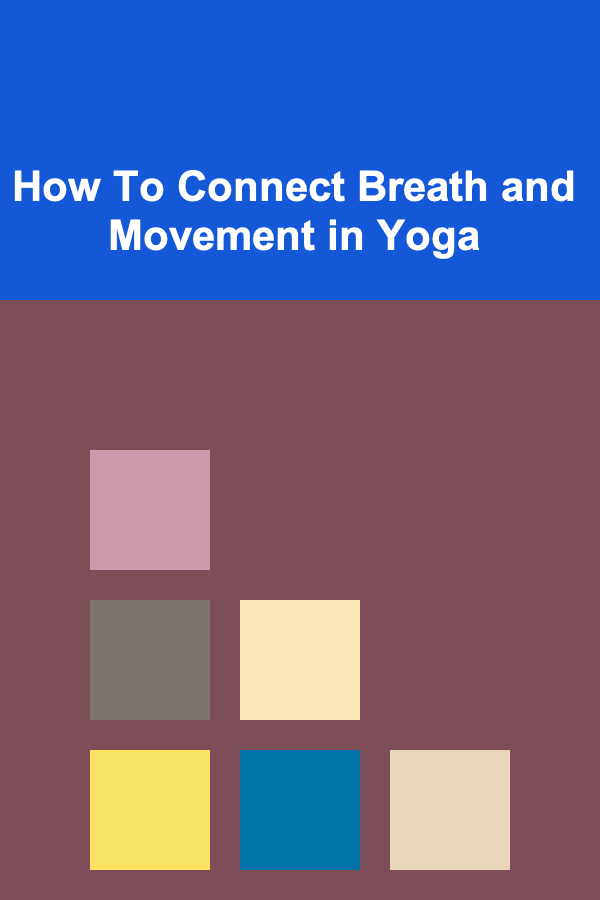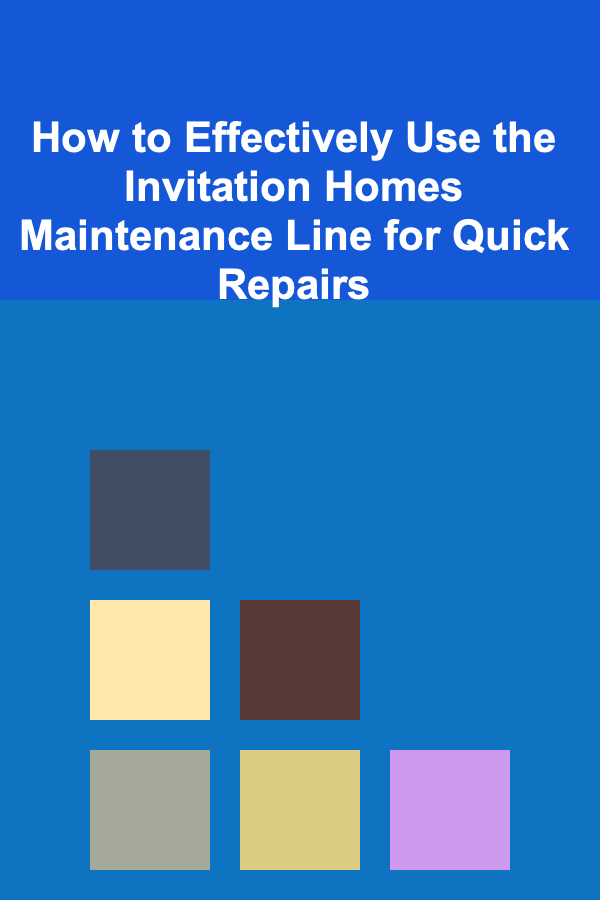
How To Connect Breath and Movement in Yoga
ebook include PDF & Audio bundle (Micro Guide)
$12.99$10.99
Limited Time Offer! Order within the next:

Yoga is not just a physical practice; it is a mind-body experience that incorporates breathing, meditation, and mindful movement. One of the most powerful aspects of yoga is its ability to connect breath and movement, creating a harmonious flow that promotes both physical and mental well-being. In this article, we will explore how to connect breath and movement in yoga, why it's important, and how this connection enhances the yoga practice.
The Importance of Breath in Yoga
In yoga, breath, or "prāṇā" in Sanskrit, is often referred to as the life force or vital energy. Breath is the bridge between the mind and body, helping to create a unified experience during practice. The breath is integral to the practice of yoga for several reasons:
- Focus and Awareness: The breath provides a focal point, helping practitioners stay present and mindful. By focusing on the breath, the mind can quieten, and the body can move more fluidly.
- Regulation of the Nervous System: Slow, deep breathing activates the parasympathetic nervous system, which helps to reduce stress and promote relaxation. This allows for deeper stretching and easier transitions between poses.
- Energy Flow: In yoga, breath is believed to guide the flow of energy, or prāṇa, through the body. By coordinating breath with movement, practitioners can move more effectively and feel energized.
- Deepening the Practice: Connecting breath with movement enables the practitioner to deepen their practice by allowing them to explore poses with greater flexibility, balance, and strength.
The Role of Movement in Yoga
Movement in yoga is essential as it allows practitioners to engage with their bodies in a meaningful way. Yoga postures, or asanas, are designed to increase flexibility, strength, and awareness. Each movement should be deliberate and aligned with the breath to create a seamless experience.
Movement in yoga is not about forcing the body into a particular shape but rather about creating space in the body and mind. By connecting movement with breath, the practitioner allows their body to naturally find its alignment, promoting a deeper sense of relaxation and ease.
Yoga movement can be categorized in several ways:
- Flexibility: Many yoga poses require lengthening and stretching muscles. The breath helps to deepen these stretches, allowing practitioners to increase flexibility safely.
- Strength: Holding certain poses requires muscle engagement. By coordinating breath with movement, practitioners can maintain stability and strength, even during challenging poses.
- Balance: Yoga poses often require balance and stability. The breath helps to center the mind and body, allowing for greater focus and control.
- Flow: In certain styles of yoga, such as Vinyasa or Ashtanga, the emphasis is placed on the flow of breath with movement. This dynamic connection creates a sense of rhythm and continuity, where each movement is synchronized with an inhale or exhale.
How to Connect Breath and Movement
The key to connecting breath and movement in yoga is to develop an awareness of the body and breath and learn how to integrate them fluidly. Here are some practical steps to guide you in connecting breath with movement:
1. Start with Deep Breathing
Before you begin moving, take a few moments to connect with your breath. Sit comfortably or lie down and take a few deep, conscious breaths. Inhale deeply through your nose, allowing your belly to expand, and then exhale slowly, letting go of any tension. As you breathe, focus on the rise and fall of your belly and chest. This will help you become aware of your natural breath rhythm.
2. Use Ujjayi Breath
Ujjayi breath, often called "victorious breath," is a common pranayama (breathing technique) used in yoga to help connect breath with movement. To practice Ujjayi breath:
- Inhale deeply through the nose, filling your lungs completely.
- As you exhale, constrict the back of your throat, creating a soft "ha" sound, like the sound of ocean waves.
- Keep the breath slow and steady, ensuring that it is deep and controlled.
Ujjayi breath can help you stay present, control the pace of your practice, and regulate the flow of prāṇa (life force) throughout the body.
3. Synchronize Breath with Movement
In yoga, it's essential to align your breath with your movements. This can be achieved by matching the breath to the rhythm of the poses. The general guideline is:
- Inhale to lengthen or open the body, such as in a backbend or during an upward movement.
- Exhale to deepen or fold into the body, such as in a forward bend or during a downward movement.
In a Vinyasa practice, for example, you may inhale as you lift your arms overhead and exhale as you fold forward into a forward bend. This creates a natural rhythm between the breath and movement, making the practice feel more fluid.
4. Use Breath to Facilitate Transitions
Transitions between poses are just as important as the poses themselves. By using the breath to guide transitions, you can move more gracefully and with greater ease. For example, when transitioning from Downward Dog to Plank Pose, you might inhale as you shift forward into Plank, and exhale as you lower back into Downward Dog. This mindful use of breath helps maintain momentum and fluidity throughout the practice.
5. Create a Mindful Flow
Yoga is often described as a "moving meditation." To truly connect breath and movement, you must develop a sense of flow and mindfulness. Each breath should guide the movement, and each movement should create a natural opening for the next breath. As you progress through a sequence, maintain a sense of ease and allow your breath to lead the way.
6. Focus on the Areas of the Body That Need Support
Certain poses or movements may require extra focus and breath support. For example, in balancing poses, it's essential to maintain a steady breath to keep your mind calm and your body centered. In challenging poses, such as arm balances or inversions, engaging your breath can help you maintain strength and control.
Use your breath to support the muscles that are being engaged. For example, when you are in Warrior II, you can breathe deeply to create space in your hips and chest. When you are in a core pose like Boat Pose, you can use the breath to strengthen your core and maintain stability.
7. Adjust Your Breath to Your Pace
Yoga is not a race. It's essential to adjust your breath and movement to your own pace. Some poses may require a longer hold or slower movement, while others may be more dynamic. Trust your body and listen to the breath, allowing it to guide you through the practice. If you feel that your breath is speeding up, slow down your movements. If your breath is shallow, take a moment to deepen it.
The Benefits of Connecting Breath and Movement
- Enhanced Focus: By connecting breath with movement, you focus your attention on the present moment, preventing distractions from pulling your mind away from the practice.
- Increased Flexibility and Strength: Coordinating breath with movement allows the body to relax into each stretch and hold positions longer, deepening flexibility and strength.
- Stress Relief: Mindful breathing helps reduce stress by activating the parasympathetic nervous system, calming the body and mind.
- Improved Flow: The seamless connection between breath and movement creates a smooth, fluid practice. This can lead to a more fulfilling yoga session, where the transitions feel effortless and natural.
- Better Mind-Body Connection: As you deepen the connection between breath and movement, you cultivate a greater awareness of your body. This fosters a more profound sense of self-awareness, helping you become more in tune with your physical and emotional state.
- Increased Energy: When breath and movement are synchronized, the body can move with greater efficiency. This allows for better energy flow throughout the body, leaving you feeling revitalized after practice.
Overcoming Challenges in Breath-Movement Coordination
While the connection between breath and movement in yoga is powerful, it can also be challenging. Here are some common obstacles and tips for overcoming them:
- Shallow Breathing: If you find that your breath is shallow or uneven, try to slow down your practice. Focus on inhaling deeply through the nose and exhaling fully, making sure each breath is intentional.
- Rushed Movements: Sometimes, practitioners rush through poses, trying to keep up with the flow or the pace of the class. To counter this, focus on the quality of each breath and movement rather than the speed. Slow down if necessary, and allow the breath to guide you.
- Muscle Tension: Holding tension in certain areas of the body can interfere with smooth movement. Pay attention to areas where tension tends to accumulate (such as the shoulders or jaw) and consciously release this tension with each exhale.
- Mind Wandering: If your mind begins to wander during practice, gently bring your focus back to your breath. Use the breath as an anchor to bring yourself back into the present moment.
Conclusion
Connecting breath and movement in yoga is a transformative practice that can enhance physical flexibility, strength, and mental clarity. By learning to synchronize breath with movement, you can deepen your yoga practice, creating a harmonious flow between body and mind. Through mindful breathing, you can cultivate greater awareness, reduce stress, and improve energy flow, leading to a more peaceful and balanced life. Remember that yoga is a personal practice, and the connection between breath and movement will evolve with time and experience. Allow your breath to guide you, and let your movements become an expression of that breath.

Building a Passive Income Empire Using Deep Learning and AI
Read More
How to Create a Seasonal DIY Project Calendar
Read More
How to Cut Household Expenses Without Sacrificing Comfort
Read More
How to Effectively Use the Invitation Homes Maintenance Line for Quick Repairs
Read More
How to Reduce Sugar Intake for Weight Loss
Read More
How to Turn Your Closet into a Space-Saving Haven
Read MoreOther Products

Building a Passive Income Empire Using Deep Learning and AI
Read More
How to Create a Seasonal DIY Project Calendar
Read More
How to Cut Household Expenses Without Sacrificing Comfort
Read More
How to Effectively Use the Invitation Homes Maintenance Line for Quick Repairs
Read More
How to Reduce Sugar Intake for Weight Loss
Read More